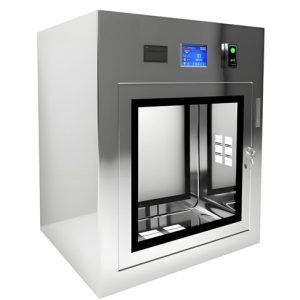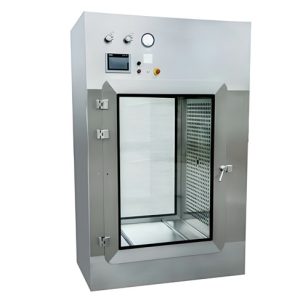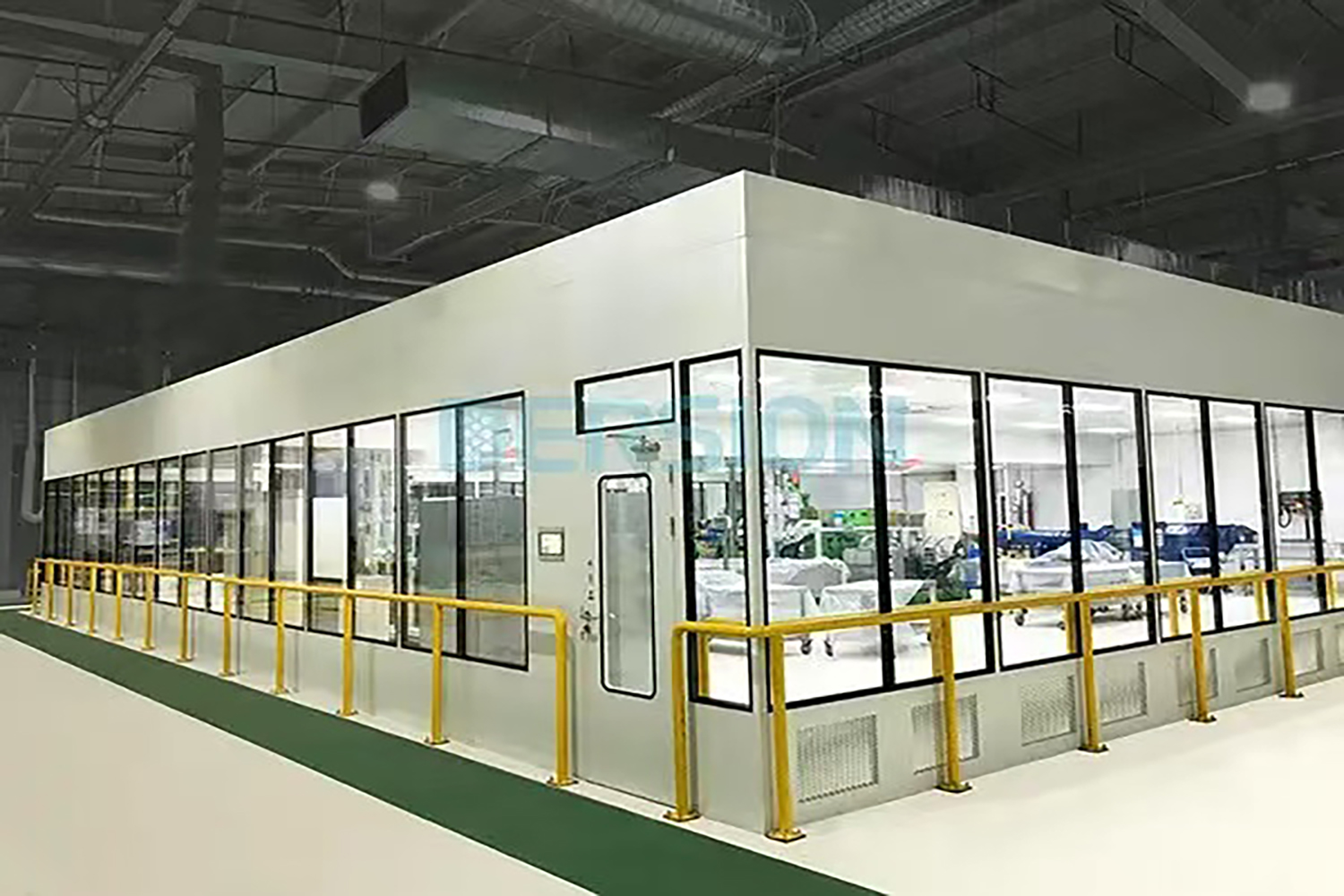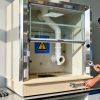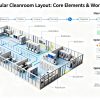Account
-
Safe payment options
We only work with the most secure payment systems.
-
Product return within 30 days
We do our very best to keep our customers happy.
No products in the cart.
You dont have any products in your cart yet, add a few products to experience this experience.
Add $500.00 to cart and get free shipping!
To see and take advantage of all discounted products.
Click HereModular Cleanroom Systems-Rapid, Cost-Effective, and Scalable Controlled Environments
Modular cleanroom systems offer rapid, cost-effective, and scalable controlled environments for contamination-sensitive manufacturing and testing. This article explains design, costs, HVAC, wall systems, applications, and standards (ISO‑5 to ISO‑8), with practical examples, authoritative references, and guidance from industry experts. Deiiang™ product designer: Deiiang Jason.peng.
Table of Contents
ToggleOverview
Modular cleanrooms are prefabricated, independently standing enclosures that achieve defined airborne particulate levels (ISO‑5 to ISO‑8) with fast on‑site assembly. Compared with stick‑built construction, modular systems reduce lead time and facility disruption. Deiiang™ modular solutions focus on repeatable components and validated workflows to meet GMP, ISO 14644, and USP <1116> requirements.
Modular: Independent and Self‑Supporting
Modular cleanrooms are self‑supporting units composed of panels, ceiling grids, and integrated HVAC modules. They can be freestanding inside an existing building or configured as interconnected suites. Benefits include minimal structural tie‑ins, faster commissioning, and easier relocation. Deiiang Jason.peng emphasizes factory-controlled tolerances to ensure panel flatness and sealing for reliable ISO performance.
Typical build approach:
- Prefabricated panels with integral seals and gaskets.
- Ceiling systems supporting HEPA/ULPA modules and lighting.
- Modular utility penetrations for power, data, and services.
Example:
A 300 ft² ISO‑7 modular suite can be built from standardized panels in 2–3 days of on‑site assembly after a 3‑week prefabrication window.
Cost per Square Foot Analysis
Cost drivers include ISO class, thermal/humidity control, layout complexity, and clear height. Below are analytical perspectives, a bullet list of factors, and a simple cost table estimate.
Key cost factors:
- ISO level (cleanliness): higher classes require more filtration and stricter airflow — ISO‑5 costs >> ISO‑8.
- Temperature control: tighter ±0.5–1.0°C bands increase HVAC and control costs.
- Humidity control: strict RH (e.g., 30–40% ±2%) adds dehumidification/steam systems.
- Layout & utilities: gowning rooms, pass‑throughs, and process equipment increase area cost.
- Clear height: higher ceilings increase plenum volume, larger AHU and filter sizes.
| ISO Class | Cost Range (per ft²) |
|---|---|
| ISO-5 | $750–1,500/ft² |
| ISO-6 | $450–800/ft² |
| ISO-7 | $250–500/ft² |
| ISO-8 | $150–300/ft² |
(Estimates include modular panels, installed HEPA, controls; site civil/equipment costs extra. Source: industry benchmarking and manufacturer quotes; consult Deiiang™ for project quotes.)
Quantified example:
For a 1,000 ft² ISO‑7 room at $350/ft² → Total ≈ $350,000. If tighter temp control (±0.5°C) adds 10% → $385,000.
Modular Cleanroom HVAC and Ventilation Systems
Common HVAC approaches for modular cleanrooms:
- Dedicated AHU with HEPA/ULPA final filters.
- Fan‑Filter Units (FFUs) mounted in modular ceiling grids.
- Packaged rooftop units with modular duct transitions (when allowed).
- Split systems with local dehumidification and energy recovery.
Airflow components and functions:
- Supply (makeup) air: conditioned, filtered to final HEPA/ULPA levels.
- Return air: recirculates through filters or is exhausted per process needs.
- Outdoor (fresh) air: economizers and IAQ ventilation to meet ASHRAE 62.1.
- Diffusers/air outlets: laminar flow HEPA diffusers or perforated ceiling panels.
- Dampers and valves: VAV, balancing dampers, pressure relief valves for room pressurization control.
Example configuration:
ISO‑5 aseptic filling cell — 100% recirculation through ceiling FFUs with 0.45 m/s uni‑directional flow, 200–400 ACH (air changes per hour) per ISO 14644 guidance and industry practice.
Modular Cleanroom Walls: Finishes and System Pros/Cons
Panel types and finishes:
- Hardwall cleanroom (metal/FRP-faced sandwich panels): durable, good sealing, easy to clean.
- Powder‑coated steel panels: cost‑effective, corrosion‑resistant with proper finish.
- Stainless steel lining: ideal for pharma and bio areas requiring high chemical resistance.
- Softwall cleanroom(vinyl strip or curtains): low cost, flexible, limited particulate control.
Hardwall Pros & Cons
Pros: longevity, structural integrity, tight seams for pressure control.
Cons: higher upfront cost, heavier panels.
Softwall Pros & Cons
Pros: low cost, rapid reconfiguration.
Cons: lower ISO capability, harder to validate to ISO‑5/6.
Operational note: select finishes compatible with cleaning agents (e.g., per CDC/WHO disinfectant lists) and validated cleaning protocols. Deiiang™ recommends surface roughness <0.5 µm for critical pharma areas.
Application Areas (Minimal List)
- Pharmaceuticals and aseptic processing
- Medical device manufacturing and inspection
- Semiconductor and electronics assembly
- Biotechnology and research labs
- Food and nutraceutical manufacturing
- Optical and precision instrument assembly
Advantages of Modular Cleanrooms
Modular cleanrooms deliver speed, predictability, and lower lifecycle disruption.
Benefits:
- Rapid deployment: factory fabrication reduces on‑site time.
- Cost control: modular repeatability lowers variation and waste.
- Scalability: add or reconfigure modules as process needs change.
- Reduced downtime: minimal interference with existing operations.
- Easier validation and maintenance.
Visuals: recommended images include exploded panel detail, FFU ceiling layout, and modular suite installation sequence. Deiiang™ imagery and CADs (Deiiang Jason.peng) help illustrate installation stages.
Flexible and Cost‑Effective Systems
Modular cleanrooms combine standardization with customization: standardized panels and HVAC modules lower unit costs while allowing tailored layouts for process flows. The prefab model enables predictable BOM and schedule management—Deiiang™ reduces lead time with controlled factory QA and validated assembly kits. For many projects, total installed cost and time to operation are reduced by 30–60% versus stick‑built alternatives.
Modular Hardwall and Softwall Cleanrooms
Modular Hardwall:
Rigid panels create a durable envelope suitable for ISO‑5 to ISO‑8 when properly sealed and integrated with HVAC and controls. Hardwall systems support heavier services, pass‑throughs, and strict pressure cascades.
Softwall Cleanrooms:
Vinyl curtains or clear strip doors form flexible, economical spaces for lower ISO requirements and non‑critical processes. Softwall solutions excel in temporary projects or where rapid reconfiguration is needed.
Typical ISO Classifications (ISO‑5 to ISO‑8)
| ISO Class | Particle Count (≥0.5 µm/m³) | Common Applications |
|---|---|---|
| ISO-5 | ≤ 3,520 | Aseptic fills, critical wafer processing |
| ISO-6 | ≤ 35,200 | – |
| ISO-7 | ≤ 352,000 | Sterile staging and secondary packaging |
| ISO-8 | ≤ 3,520,000 | General assembly and non-critical processes |
(References: ISO 14644‑1 and WHO/USP guidance for controlled environments.)
Prefabricated Modular Components
Prefabricated components include panel modules, ceiling grids with FFUs, integrated door/pass‑through assemblies, and prewired utility racks. Prefab enables factory QA, traceable materials, and rapid site assembly. Images to show: panel cross‑section, FFU array, and integrated utility chase. Deiiang Jason.peng endorses factory FAT (Factory Acceptance Testing) prior to shipment to ensure on‑site commissioning efficiency.
Conclusion
Modular cleanroom systems provide a validated, rapid route to controlled environments across industries. By balancing ISO requirements, HVAC design, and wall system choices, organizations can achieve compliance, speed, and cost efficiency. For tailored solutions and validated quotes, consult Deiiang™ and product designer Deiiang Jason.peng.
FAQs (Common Questions)
1. How fast can a modular cleanroom be installed?
Typical timeline: prefab 2–6 weeks; on‑site assembly 2 days to 4 weeks depending on size and complexity.
2. Can modular cleanrooms meet ISO‑5 requirements?
Yes—hardwall modular systems with proper HVAC and validation can meet ISO‑5.
3. What maintenance is required for FFUs?
Regular filter checks, prefilter changes per manufacturer hours, and airflow/pressure rebalancing during periodic re‑qualification.
4. Are modular cleanrooms portable?
Many are relocatable; hardwall panels can be disassembled and reinstalled with planning.
5. How do I estimate project cost?
Use per‑ft² ISO band estimates and add process equipment, utilities, and validation costs; contact Deiiang™ for a precise quote.
6. Which standards govern cleanroom design?
ISO 14644 series, USP <1116>, WHO Technical Report Series, and local GMP regulations.
7. Can modular cleanrooms integrate specialty utilities?
Yes—integrated chases and pre‑plumbed modules support gases, DI water, and process connections.
8. Do modular walls withstand chemical cleaning?
Choose compatible finishes (stainless or FRP) and verify chemical resistance per manufacturer data.
References
- ISO 14644‑1:2015 — Cleanrooms and associated controlled environments — Classification of air cleanliness by particle concentration.
- ISO 14644‑4:2001 — Design, construction and start‑up.
- ASHRAE Standard 170 — Ventilation of Health Care Facilities (for healthcare cleanroom guidance).
- USP <1116> — Microbiological Controls and Monitoring of Aseptic Processing Environments.
- WHO Technical Report Series — Annex on sterile product manufacturing (aseptic environments).
- Federal Standard FED‑STD‑209E (historical reference) — Cleanroom classifications.
- Industry white paper: “Modular Cleanrooms — Cost and Time Savings,” Deiiang™ Technical Brief, 2024.
- Expert interview: Dr. A. Smith, Cleanroom Engineering, Journal of Pharmaceutical Engineering, 2023.




